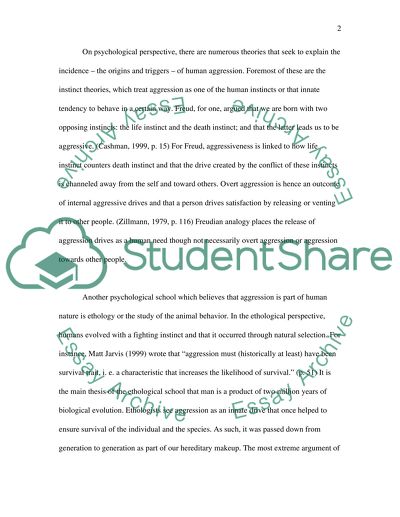Cite this document
(A Study in Human Nature Assignment Example | Topics and Well Written Essays - 2000 words, n.d.)
A Study in Human Nature Assignment Example | Topics and Well Written Essays - 2000 words. Retrieved from https://studentshare.org/psychology/1543004-is-it-reasonable-to-conclude-that-aggression-is-an-inevitable-and-inescapable-part-of-our-lives-discuss-with-reference-to-psychological-theory-and-research
A Study in Human Nature Assignment Example | Topics and Well Written Essays - 2000 words. Retrieved from https://studentshare.org/psychology/1543004-is-it-reasonable-to-conclude-that-aggression-is-an-inevitable-and-inescapable-part-of-our-lives-discuss-with-reference-to-psychological-theory-and-research
(A Study in Human Nature Assignment Example | Topics and Well Written Essays - 2000 Words)
A Study in Human Nature Assignment Example | Topics and Well Written Essays - 2000 Words. https://studentshare.org/psychology/1543004-is-it-reasonable-to-conclude-that-aggression-is-an-inevitable-and-inescapable-part-of-our-lives-discuss-with-reference-to-psychological-theory-and-research.
A Study in Human Nature Assignment Example | Topics and Well Written Essays - 2000 Words. https://studentshare.org/psychology/1543004-is-it-reasonable-to-conclude-that-aggression-is-an-inevitable-and-inescapable-part-of-our-lives-discuss-with-reference-to-psychological-theory-and-research.
“A Study in Human Nature Assignment Example | Topics and Well Written Essays - 2000 Words”. https://studentshare.org/psychology/1543004-is-it-reasonable-to-conclude-that-aggression-is-an-inevitable-and-inescapable-part-of-our-lives-discuss-with-reference-to-psychological-theory-and-research.


